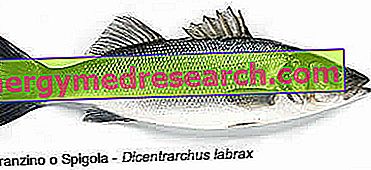Ingredients
What are the ingredients of Red Bull?
Water, Sucrose, Glucose, Acidity regulators (Sodium Citrates, Magnesium Carbonate), Carbon dioxide, Acids (Citric Acid), Taurine (0.4%), Caffeine (0.03%), Glucoronolactone, Inositol, Vitamins ( Niacin, Pantothenic Acid, B6, B12), Flavors, Dyes (Caramel, Riboflavin).

Taurine
Red Bull and taurine
What is taurine?
Taurine is a conditionally essential amino acid, produced from sulfur amino acids such as methionine and cysteine.
Taurine functions
It is particularly concentrated in the muscular, cardiac and cerebral levels; falls into numerous biological functions:
- Synthesis of bile salts
- Maintenance of cellular hydrosaline homeostasis
- Cellular and tissue protection (mainly at cardiac level)
- Detoxifying action
- Modulation of the immune response.
Taurine in sports
In sports, taurine is successfully used in the reduction of oxidative damage induced by intense physical activity, effectively protecting muscle structures, already at doses of 1.5 g.
glucoronolattone
Red Bull and glucoronolactone
What is glucoronolactone?
Glucoronolactone is a sugar produced in the liver during glucose metabolism. It can be introduced through the diet (very present in cluster fruits, apples, oranges and crucifers).
An assumed face, it comes from hepatic oxidation to glucaric acid and other metabolites, mainly responsible for its biological function.
Glucoronolactone functions
- Detoxifying: guarantees liver detoxification processes by glucuronation
- Possible cytoprotective and antitumor action (still in experimental phase).
Glucoronolactone: does it work?
The only studies in the literature regarding the supplement with this product are those in which the effectiveness of the various energy drinks is evaluated. This does not allow us to draw firm conclusions regarding the ergogenic or cognitive efficacy of this compound.
RED BULL Nutritional Values- per 250 ml can -
|
Caffeine
Red Bull and caffeine
What is caffeine?
Caffeine is a methylxanthine commonly introduced through coffee; in fact, an espresso can contain up to 100 mg. Once ingested, the caffeine in Red Bull is quickly circulated and used by various tissues.
Caffeine functions
- Stomach: promotes acid secretion
- Heart: chronotropic and positive inotropic action (increases heart rate and myocardial contraction force)
- Brain: increases attention and cognitive ability
- Respiratory system: promotes the release of involuntary bronchial musculature, improving ventilatory capacity
- Muscles: facilitates muscle contraction processes, improving hemodynamic properties
- Kidneys: stimulates diuresis.
Caffeine in sport
In sports, caffeine contributes to:
- Improve performance in terms of strength and strength. This ability is certainly due to the saving of muscle glycogen in favor of lipid oxidation, to the muscular vasodilatory effect and probably to a better influx of calcium in skeletal muscle, with consequent easier contraction
- Reduce the feeling of fatigue: thanks to the improvement of the oxidative metabolism on the one hand and the analgesic effect on the other.
Dose and side effects of caffeine
The maximum safe dose used in the studies is 300 mg, beyond which there are tremors, anxiety, tachycardia, insomnia and excitement. On the other hand, prolonged use is an important risk factor for diseases of the gastrointestinal, cardiovascular and nervous tract (migraine).
Niacin
Red Bull and niacin
What is niacin?
Also known as nicotinic acid, vitamin B3 or vitamin PP (Pellagra Prevented), it is introduced through the meat and absorbed in the intestine; a small quota can be synthesized starting from the amino acid tryptophan.
Niacin functions
Its biological function is that of cofactor, in the form of NAD or NADP, in numerous biological reactions:
- Central oxidation-reduction reactions in the metabolism, as it is involved both in the catabolic reactions (necessary to obtain energy), and in the anabolic ones (necessary for the constitution of new elements
- Non-redox reactions: important in the regular growth, differentiation and cellular function.
Niacin deficiencies are very rare and responsible for a disease known as Pellagra, characterized by diseases of the gastro-intestinal tract, dermatitis and neuronal deficits.
Niacin in sport
Several studies have shown that B vitamins can support athletic and mental performance, and help drug therapies against cardiovascular and infectious diseases (HIV).
Other in-depth studies are also underway to try to understand the role of this vitamin in the prevention of cancer and diabetic pathology.
Dose and side effects of niacin
The recommended daily dose for the Italian population is around 20 mg for men and 15 mg for women, considering that excessive doses can cause reddening and itchy skin, nausea and vomiting. Cases of hepatotoxicity have also occurred at doses above 500 mg / day.
Pantothenic acid
Red Bull and pantothenic acid
What is pantothenic acid?
Also known as Vitamin B5, it is part of the synthesis of Coenzyme A, together with ATP and cysteine, playing a key role in all reactions in which the transfer of an acyl group takes place (oxidative decarboxylation of pyruvate and α-ketoglutarate, oxidation of fatty acids).
Functions of pantothenic acid
Pantothenic acid therefore participates in:
- Catabolic reactions, necessary to obtain energy from foods
- Synthetic reactions of fatty acids, cholesterol and steroid hormones
- Synthesis reactions of neurotransmitters
- Metabolic reactions of drugs and toxins.
Dose of pantothenic acid
The recommended daily dose ranges from 4 to 7 mg; however, given the presence of this vitamin in many foods (mainly whole grains and meats), deficiencies are found only in severe cases of malnutrition. There are no known cases of toxicity, although at very high doses (10/20 grams per day) profuse diarrhea has been recorded.
Vitamin B6
Red Bull and vitamin B6
What is vitamin B6?
Also known as pyridoxine, it is a pyridine derivative introduced mainly through meat, absorbed at fasting level after dependent ATP hydrolysis and transported to the liver bound to albumin. Here, the pyridoxine is transformed into pyridosamine and then into pyridoxal and subsequently phosphorylated, with consequent activation and storage. From the liver it is then conveyed to the various tissues where it can fulfill its biological role.
Functions of vitamin B6
Vitamin B6 works primarily as a cofactor; to be precise:
- Increases blood glucose levels: it favors glycogenolysis and gluconeogenesis
- Promotes the synthesis of neurotransmitters such as serotonin, dopamine, norepinephrine, GABA
- Leads the synthesis of the EME group, necessary for hemoglobin to bind oxygen
- It allows the synthesis of Niacin, starting from tryptophan
- Modulates hormonal action.
Application and dosage of vitamin B6
It is used in the treatment of numerous pathologies, with particular importance for those neurodegenerative, cardiovascular and in immune disorders. Its daily requirement is around 1 / 1.5 mg, but even in this case deficiency situations are very rare.
Vitamin B12
Red Bull and vitamin B12
What is vitamin B12?
Also known as cobalamin, it is present in numerous forms, even though the biologically active organisms in the human body are only methylcobalamin and 5 deoxy deanosyl cobalamin. Among all, it is the only vitamin that contains a metal ion (COBALT) in its structure.
Functions of vitamin B12
Represents the enzymatic cofactor for two enzymes:
- Methionin synthase: mediator of the homocysteine detoxification reaction, therefore important in the prevention of cardiovascular risks
- Methylmalonyl-CoA mutase: important in energy metabolism from fats and proteins and also involved in the synthesis of EMOGLOBIN.
Vitamin B12 requirements and deficiency
Vitamin B12 deficiencies are quite evident in the elderly population over 60 years, with consequent increase in homocysteine levels, onset of anemic pictures (pernicious anemia) and gastrointestinal and neurological disorders.
The daily requirement for the Italian population is estimated at around 20 mcg, which however should increase in the population over 60.
The diffusion of the deficiency states is determined by very complex absorption mechanisms, which include the presence of intrinsic factor (produced at the gastric level), specific intestinal receptors and plasma transporters.
Other Ingredients
What are the other functional ingredients of Red Bull?
- Inositol: synthesized by the liver and derived from food, it covers numerous biological functions; it is very important for liver function (hepatoprotective action), brain (mild sedative) and plasma membranes.
- Citric acid: has a preservative and corrective action of acidity; promotes iron absorption and hinders the formation of kidney stones; it also performs a mild bactericidal and anti-arthritic action.
- Glucose and sucrose: they have an energetic function.
Red Bull Contraindications
It is advisable to limit the consumption of Red Bull under the age of 16, during pregnancy, breastfeeding, in the presence of diabetes mellitus, hypertension, nervousness, hyperthyroidism, insomnia, high cardiovascular risk and dehydration (Red Bull is not a rehydrating drink but promotes the loss of liquids due to the caffeine content).
The excessive consumption of Red Bull is also contraindicated to athletes for the risk of caffeine positivity; this risk becomes concrete when the intake levels exceed 200 mg in the three hours preceding the competition.
Effects
What are the effects of Red Bull on the human body?
The most frequent use of Red Bull is as a tonic-energizing. It is used assiduously by those who show little clarity at the time of awakening, by students who are "on the small hours" and by sportsmen who look for an extra nudge (of a nervous type) during the performance.
However, many wonder what the "measurable", and therefore objective, effects of Red Bull can be defined in the body of an average human being. Below we will briefly list them:
What happens after drinking a Red Bull? | |
| Let's see what happens to your body after drinking a Red Bull from the moment it enters the mouth at the end of the stimulating effects; in a can (250 ml) of Red Bull are contained: 80 mg of caffeine and 27.5 g of sugars (today is also available the Red Bull without sugar). By 2015, the number of cans sold amounted to over 50 billion. | |
| 10 minutes later | At the time of taking Red Bull, it takes at least 10 minutes to allow caffeine to enter the bloodstream (absorption and diffusion). At this stage, heart rate and blood pressure begin to increase. |
| 15-45 minutes later | Caffeine levels in the blood are reaching a peak; almost all the stimulant of the drink is in circulation. An increase in attention and concentration is perceptible; sometimes of the alert threshold (anxiety). |
| 30-50 minutes later | All caffeine is absorbed and moves in the blood; the same is true for sugars. Meanwhile, the liver begins to metabolize all these molecules. |
| 1 hour later | Blood sugar tends to fall, as does the concentration of caffeine in the blood. The brain perceives an evident feeling of tiredness, also determined by the "rebound" effect of the euphoric phase just ended. |
| 5-6 hours later | The caffeinemia level is 50%. Women who take birth control pills take twice as long. |
| 12 hours later | At this stage, most people have completely eliminated caffeine. The speed of this process depends on many factors such as age, constitution and body mass, general physical activity, liver activity, drug intake etc. |
| 12 -24 hours later | As caffeine is a psychotropic substance that can be addictive, after 24 hours you can feel the symptoms of "deficiency" such as headache, irritability and constipation. |
| 7-12 days later | Some studies have shown that this is the time frame for which the body becomes tolerant of regular caffeine dosage. It means that by taking the drink constantly for a prolonged period, you will get used to it and therefore you will not feel the tonic-stimulating effects of Red Bull just as effectively. |



